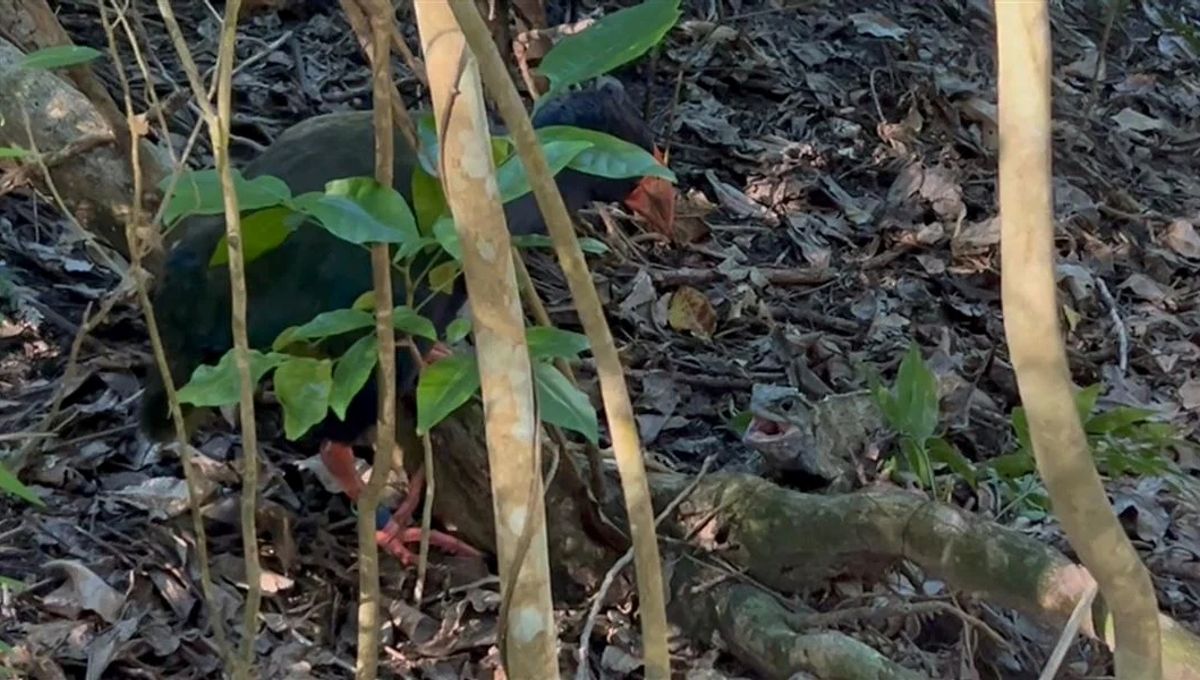
KSI vs. Fury? Tyson vs. Paul? Forget about those – we’ve got a much more exciting tussle to show you, where the fighting ring is the bush floor of one of New Zealand’s oldest island sanctuaries and the competitors are two of its most iconic, but vulnerable species.
In the blue corner, we have the takahē (Porphyrio hochstetteri), a flightless bird species that’s the largest member of the rail family – it’s got size on its side. In the red corner, there’s the tuatara (Sphenodon punctatus); it’s smaller but scrappy, and the last living species of sphenodontia, an order of reptiles that lived alongside the dinosaurs.
Who made the first move? According to New Zealand Department of Conservation (DOC) Ranger Nick Fisentzidis – who noticed the scuffle beginning on Tiritiri Matangi Island and quickly started filming it on his phone – it was the takahē.
“I saw them having a bit of a nip at each other; the takahē definitely had a go at the tail of the tuatara, and they had a bit of a scrap,” said Fisentzidis in a statement.
It didn’t last for long though. “I followed them down the hill,” Fisentzidis continued, “and the tuatara got a couple of bites in, so the takahē backed off and snuck back away up the forest.”
All’s well that ends well, then – unless the takahē, which is omnivorous, gets peckish for a reptile dinner again.
“Although primarily grass feeders, [takahē] will often supplement their diet with insects, lizards, and have even been spotted taking ducklings. Protein is obviously an important part of their diet,” explained DOC Takahē Recovery Senior Ranger Glen Greaves.
“Like their cousins the pūkeko and weka, takahē can be quite predatory. Although taking on a tuatara hasn’t been seen before that I’m aware of, it is not at all surprising. Just a bit bigger than their usual snack! It’s good to see the tuatara stand up for itself.”
For Fisentzidis to have captured the footage of the scrap was a rare opportunity. Both species are far fewer in number than they were historically, with tuatara only remaining on pest-free islands like Tiritiri Matangi, and just over 500 takahē left in the entirety of New Zealand – they were even suspected to have gone extinct, twice. Tiritiri Matangi is one of only two places where the two species co-exist.
“It’s a neat snapshot of how these interactions may have gone in the past,” said Fisentzidis.
Luckily, both are the subject of conservation efforts, with Tiritiri Matangi acting as a community-led safe haven for multiple rare, native species to survive and thrive, with invasive predators having been eradicated from the island.
With continuing work, skirmishes between takahē and tuatara might not be so rarely seen in the future. “[The footage] shows what’s possible in the future if we really start to rally together to bring more of our native wildlife back,” Fisentzidis concluded.
Source Link: Watch: Rare Footage Captures Two Vulnerable New Zealand Species “Having A Scrap”